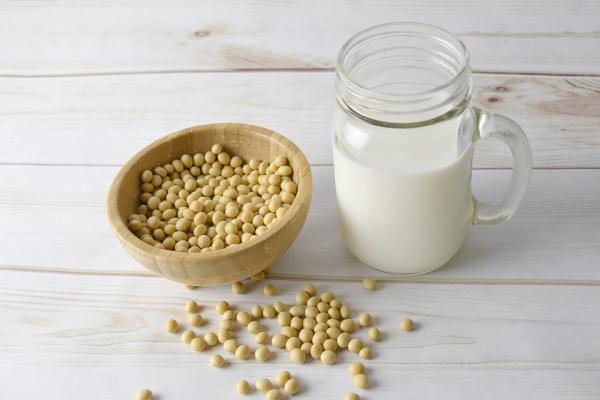
Jan. 31 (UPI) — Got soy milk?
The famous ad campaign by milk processors touting their cow-derived product — Got Milk? — may be up for a reboot if people who drink plant-based milk base their selection on nutritional value.
The producers of soy milk can brag about its nutritional value based on a study by the Department of Bioresource Engineering at McGill University in Montreal and published in the January issue of the Journal of Food Science and Technology.
Doctoral candidate Sai Kranthi Vanga and his supervisor Vijaya Raghavan studied the four most commonly consumed types of milk beverages from plant sources around the world — almond milk, soy milk, rice milk and coconut milk — and compared their nutritional values with cow’s milk.
Cow’s milk is the most most nutritious, researchers say, but soy milk, made from soybeans, is clearly tops among the rest, they determined.
“Due to the issues like lactose intolerance and milk allergy arising from the consumption of cow’s milk, there has been an increased demand in the plant-based alternative milks around the world,” the researchers wrote in the study.
“[The] food industry has addressed these demands by introducing various milk beverages which are promoted as alternatives coming from plant sources which include almond milk and soy milk. Though they are popularly advertised as healthy and wholesome, little research has been done in understanding the nutritional implications of consuming these milk beverages in short term and long term.”
The researchers compared the nutrition in 240 ml servings of unsweetened versions of the various plant-based milks and cow’s milk.
The study touts cow’s milk for its benefits as a “wholesome, complete food, providing all major nutrients like fat, at 9.05 grams, carbohydrates, at 11.5 grams, and proteins, at 11.5 grams,” as well as its 294.2mg of calcium.
But, the researchers note that various pathogens, including Salmonella and E. coli, have been associated with disease outbreaks around the world. Additionally, 2.2 percent to 3.5 percent of children develop an allergy to cow’s milk, and lactose intolerance affects between 15 percent and 75 percent of adults, depending on race, food habits and gut health.
Researchers said soy milk was the “most balanced nutritional value.” It’s linked to the anti-carcinogenic properties of phytonutrients in the milk known as isoflavones. The serving was 95 calories and had the most fat, at 4.5 grams, proteins, at 8 grams, and carbohydrates, at 4 grams. It tied almond milk in calcium at 330 milligrams.
The downside is the “beany flavor” and the presence of anti-nutrients, which are substances that reduce nutrient intake and digestion.
Rice milk was highlighted for its “sweet taste and little nutrition.” Because it’s lactose free, it is an alternative for people who have allergy issues with soybeans and almonds. Among the four plant bases, its calorie count was the highest with 130. They noted that this milk can result in malnutrition without proper care, especially in infants.
Coconut milk was described as containing “no protein and few calories, but most of them from fat.” It’s widely consumed in Asia and South America, and it can reduce levels of harmful low-density lipoprotein, which is bad cholesterol, associated with cardiovascular diseases. It’s only 45 calories.
Almond milk requires “complementary sources of food to provide essential nutrients.” As a positive, almonds are helpful in weight loss and weight management because of a high content of monounsaturated fatty acids. In addition, MUFA helps in reducing low-density lipoprotein.
Aside from understanding the nutritional value of each milk and comparing their benefits, the researchers say that “more work will need to be done to understand the effects of various conventional and novel processing methods on the nutritional profile, flavor and texture of these alternative milks.”



